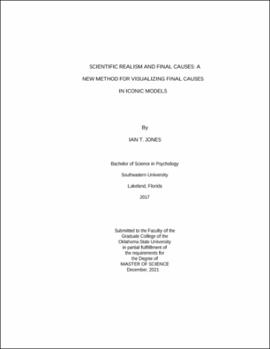| dc.description.abstract | In light of documented methodological issues and reproducibility failures, psychologists have sought to improve the scientific credibility of their field. Unfortunately, these efforts have not addressed psychology's problematic foundational philosophy, logical positivism, which has largely been abandoned by modern philosophers. Notably, other older sciences such as chemistry and physics have also replaced logical positivism with a stronger foundation, namely, philosophical realism. This thesis demonstrates how psychologists can overcome their methodological issues and reproducibility failures by likewise embracing a realist philosophy of science that includes Aristotle's four cases (viz., the material, formal, efficient, and final causes). Final causes are particularly important as they explain the purpose or reason for the occurrence of an event in nature. Utilizing Perceptual Control Theory, this thesis provides a general methodology for visually representing such causes in iconic models. Perceptual Control Theory posits that organisms are aware of sensations in the environment and respond to the awareness of these sensations towards some goal (i.e., final cause). In other words, behavior is a result of a goal held by the organism and is not merely produced from the environment. Data from a perceptual control theory task were collected and analyzed to determine the number of individuals whose responses matched the proposed final cause model. Results were highly successful as every individual's set of responses could be traced accurately through the model. Further implications and the importance of these modeling procedures are discussed. Utilizing the modeling technique developed in this thesis, psychologists can begin to rebuild their research upon the foundation of philosophical realism. In doing so, psychologists will be enabled to produce fruitful research which also restores the individual person to the center of investigation, offers inferences to best explanations, improves model testing and theory development, and most importantly, restores teleological explanations to psychological science. | |
